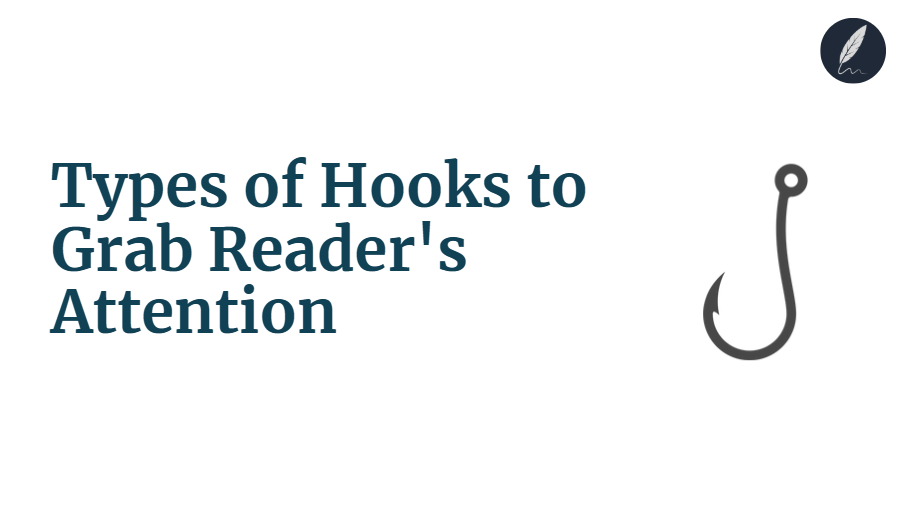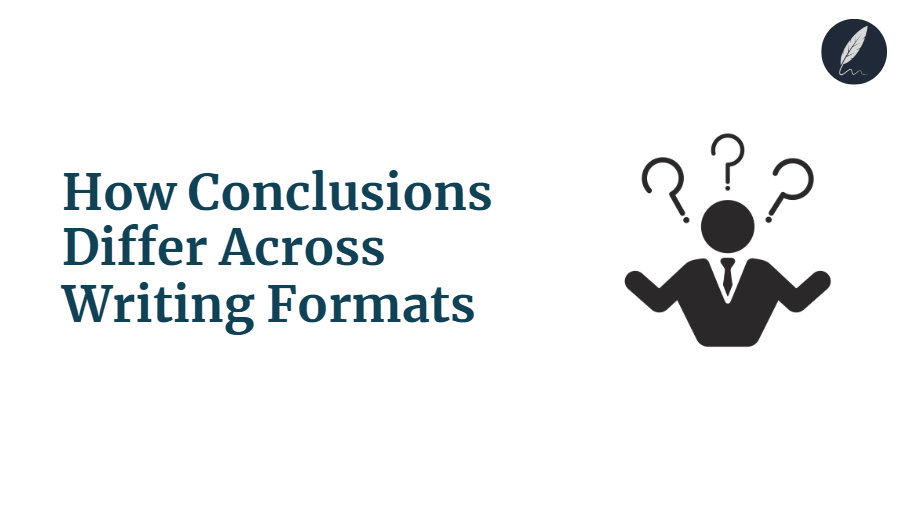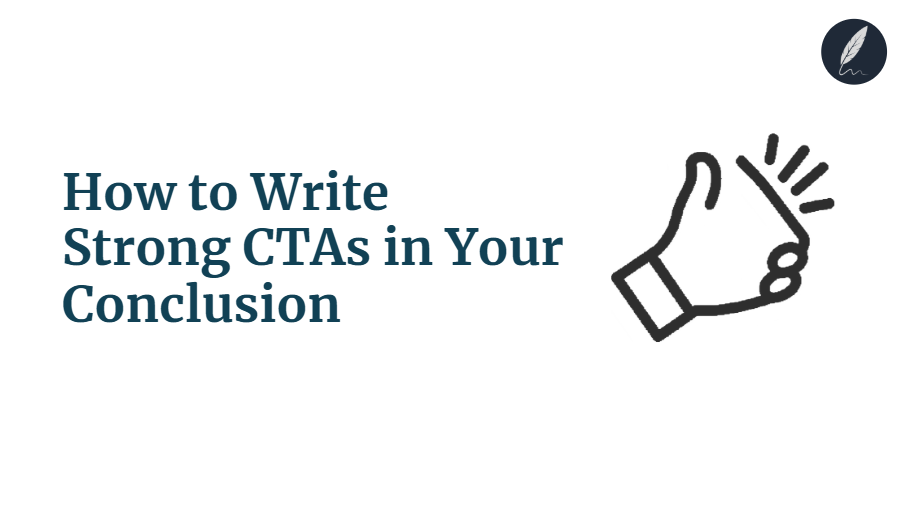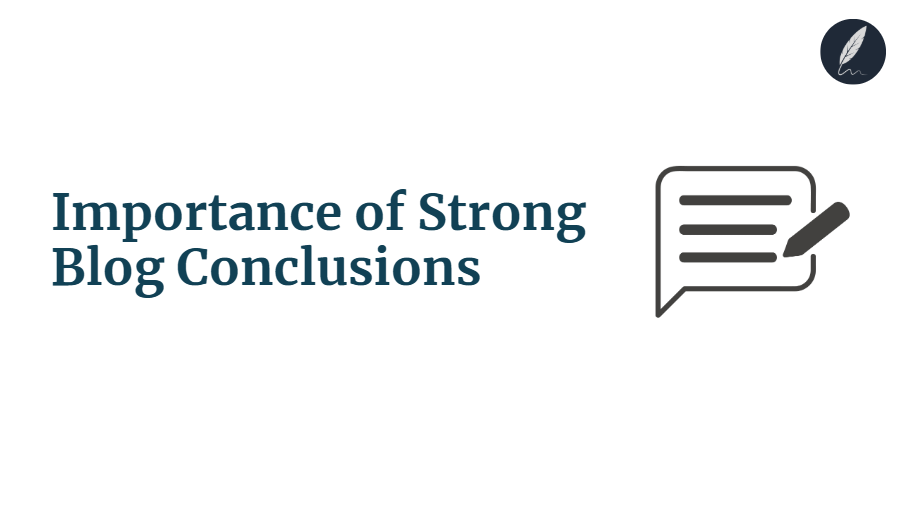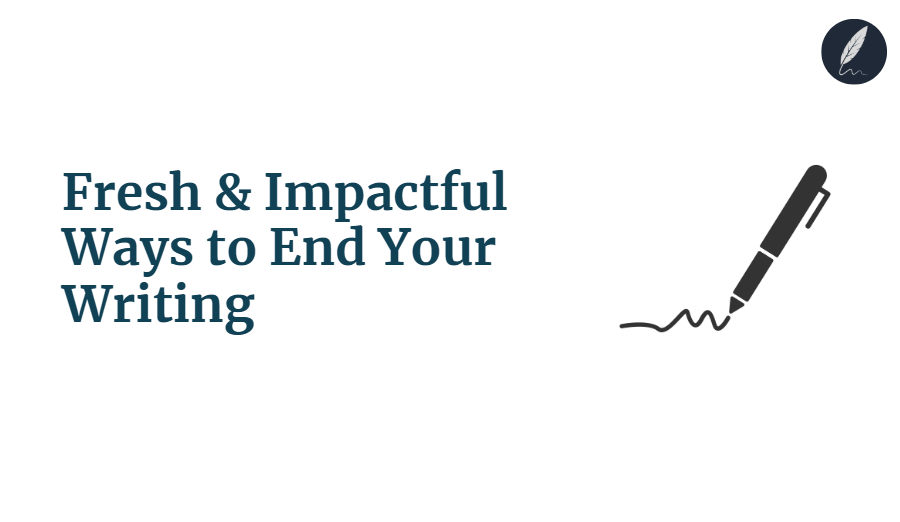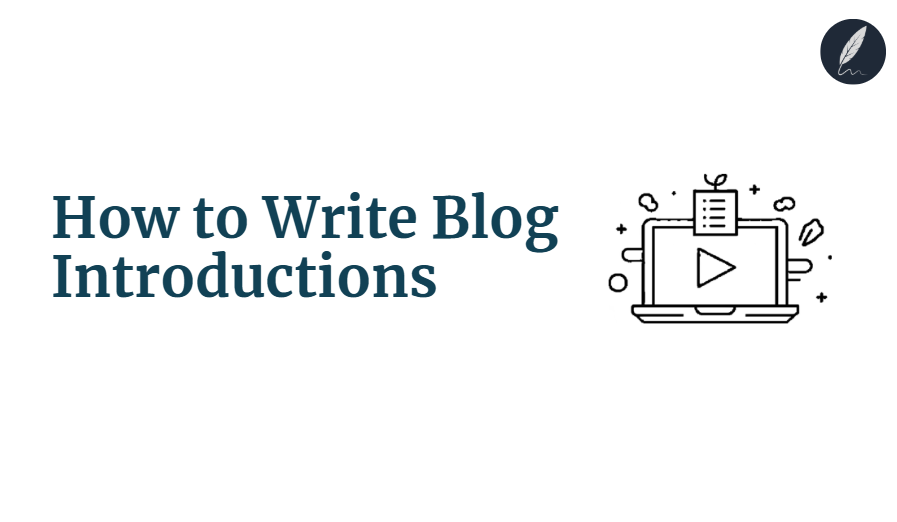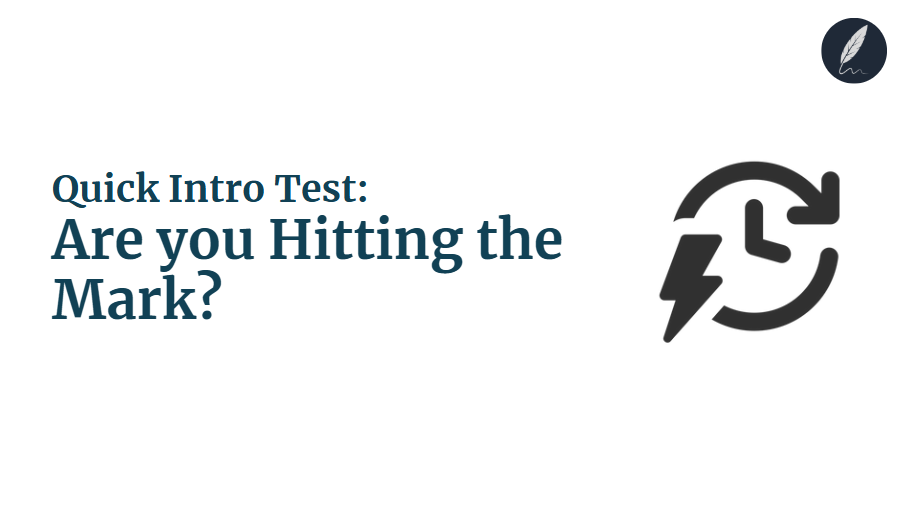Imagine instantly pulling readers in and keeping them glued to your content from the very first sentence.
11+ powerful types of hooks can transform your writing from ignored to irresistible in seconds.
Your first sentence determines whether readers stay or scroll away forever. This comprehensive guide dives deep into over 11 powerful types of hooks in writing, offering examples of good hooks for blog posts, essays, and more.
Master these proven hook techniques to instantly capture attention, spark curiosity, and keep your audience engaged from the very first word.
Ready to revolutionize your writing?
Key Takeaways
- Question Hooks: Ask compelling questions that make readers pause and think about their own experiences.
- Statistical Impact: Use surprising numbers and facts to establish credibility and shock readers into attention.
- Story Power: Start with personal anecdotes or short stories to create instant emotional connections.
- Quote Authority: Open with impactful quotes from experts to add credibility and thought-provoking insight.
- Bold Claims: Make provocative statements that challenge common beliefs and force deeper consideration.
- Metaphor Magic: Use vivid comparisons to explain complex ideas through familiar imagery and concepts.
- Sensory Description: Paint detailed scenes that immerse readers using all five senses immediately.
- Curiosity Questions: Ask intriguing questions that hint at secrets and create irresistible knowledge gaps.
- Problem-Solution: Identify reader pain points immediately while promising helpful solutions ahead.
- Humor Connection: Use lighthearted jokes and funny observations to break ice and show personality.
- Shocking Statements: Present controversial claims that challenge popular beliefs and demand deeper reading.
Understanding the Anatomy of an Effective Hook
After seeing why a strong opening matters, let’s dive into what makes a great hook work. Think of your hook as the first handshake you offer to your reader.
It’s your one chance to make a powerful first impression and invite them into your world.
A good hook is more than just a catchy phrase, it’s a carefully planned sentence or two designed to grab attention instantly.
So, what exactly defines a powerful writing hook?
It’s the very first sentence or short paragraph of any written piece that immediately draws the reader in.
It stops them from scrolling past and makes them curious enough to keep reading. The goal is simple: capture interest and set the stage for your message.
The Psychology Behind Why Hooks Work
Powerful hooks in writing aren’t magic, they tap into basic human psychology.
Understanding these ideas helps you create more effective hook sentence structures:
- The Curiosity Gap: Humans naturally want to fill gaps in their knowledge. A good hook opens a “curiosity gap” by hinting at information or a surprising fact. This makes the reader eager to find the answer. For instance, if you pose an intriguing question, it makes readers want to know the answer.
- Emotional Connection: Hooks often work by sparking an emotion. This could be surprise, humor, empathy, or even mild annoyance. When readers feel something, they are more likely to stick around.
- Immediate Value: Readers are always asking, “What’s in it for me?” An effective hook quickly shows them that your content offers something they need. This could be a solution to a problem, valuable information, or pure entertainment. It offers a promise of benefit right from the start.
Ultimately, your hook sentence is not just about grabbing attention. It’s about building a strong bridge between your opening and the main body of your article.
It sets expectations and ensures that readers are prepared and eager to consume the rest of your well-crafted content.
By mastering these elements, you’re on your way to writing introductions that truly keep readers engaged.
11+ Powerful Types of Hooks to Master
You’ve learned why a strong hook is vital and what makes it tick.
Now, let’s get practical. The good news is, there isn’t just one way to write an attention-grabbing hook. In fact, there are many different types of hooks for essays and blogs, and each one offers a unique way to pull your reader in.
Choosing the right hook depends on your topic, your audience, and the tone of your content.
Whether you’re writing a blog post hook, an academic paper, or marketing copy, mastering these techniques will make a huge difference.
Here are over 11 powerful types of hooks in writing that you can use to start your content with a bang:
1. Question Hook:
- What it is: This hook directly asks your reader a question. It could be a simple “yes” or “no” question, or one that makes them think deeply.
- Why it works: A question immediately involves the reader. It makes them pause and consider their own thoughts or experiences, creating an interactive feel. This type of hook sentence tells readers that your content will provide answers to what might be on their mind. It’s an excellent way to create engaging opening lines.
- Examples:
- Blog Post: “Struggling to manage your overflowing inbox every morning?”
- Marketing Copy: “What if you could double your leads in just 30 days?”
- Academic Essay: “Is artificial intelligence truly capable of human-level creativity?“
2. Statistic/Fact Hook:
- What it is: You start with a surprising, interesting, or little-known statistic or fact.
- Why it works: Numbers carry weight. A powerful statistic or fact immediately establishes credibility and gives your reader a piece of valuable information upfront. It can shock, inform, or simply make them curious to learn more about the context.
- Examples:
- Blog Post: “Did you know that 90% of all startups fail within their first five years?”
- Professional Email: “Only 15% of employees feel fully engaged at work, costing businesses billions annually.”
- Marketing Copy: “Over 75% of online shoppers abandon their cart at checkout.”
3. Story/Anecdote Hook:
- What it is: You begin with a short, personal story or a relevant anecdote that sets a scene or introduces a problem.
- Why it works: Humans are wired for stories. A well-told anecdote immediately draws the reader into a narrative, creating an emotional connection. It makes your content relatable and often more memorable. This is one of the most creative ways to start an article.
- Examples:
- Blog Post: “It was 3 AM, and the blank screen stared back at me, mocking my writer’s block.”
- Marketing Copy: “Just last month, Sarah, a busy working mom, transformed her daily routine with one simple change.”
- Motivational Speech Intro: “I remember the day I almost gave up on my dream, standing at a crossroads with no clear path.”
4. Quotation Hook:
- What it is: You open with a relevant and impactful quote from an expert, a well-known person, or a historical figure.
- Why it works: A powerful quote instantly adds authority and credibility to your writing. It can also spark thought or connect with readers who admire the person quoted or relate to the sentiment expressed. It’s a classic choice for essays and blogs.
- Examples:
- Blog Post: “As Maya Angelou once said, ‘There is no greater agony than bearing an untold story inside you.’”
- Academic Essay: “Aristotle posited that ‘the roots of education are bitter, but the fruit is sweet.’”
- Presentation Intro: “‘The best way to predict the future is to create it,’ famously declared Peter Drucker.”
5. Strong Statement/Bold Claim Hook:
- What it is: You start with a provocative, surprising, or authoritative statement that challenges common beliefs or makes a powerful declaration.
- Why it works: This hook immediately grabs attention because it’s assertive and often unexpected. It forces the reader to consider a new idea or perspective, setting a clear tone for the rest of your content. It’s perfect for blog post hooks that aim to be thought-provoking.
- Examples:
- Blog Post: “Most of what you’ve learned about productivity is fundamentally flawed.”
- Marketing Copy: “Your current marketing strategy is actively repelling potential customers.”
- Opinion Piece: “Remote work is not just a trend; it’s the inevitable future of the global economy.”
6. Metaphor/Simile Hook:
- What it is: You begin with a vivid comparison (using “like” or “as” for similes, or direct comparison for metaphors) that explains a complex idea in an imaginative way.
- Why it works: This type of hook engages the reader’s imagination. It simplifies difficult concepts by relating them to something familiar, making your writing more memorable and engaging. It’s one of the more creative ways to start an article.
- Examples:
- Blog Post: “Writer’s block is a tangled knot in the brain, stifling the flow of ideas.”
- Marketing Copy: “Our new software acts like a silent architect, effortlessly rebuilding your chaotic data into pristine order.”
- Creative Writing: “Her ambition was a raging wildfire, consuming everything in its path, yet illuminating the way forward.”
7. Description Hook:
- What it is: You start with a detailed, sensory description of a scene, object, or feeling.
- Why it works: This hook immediately immerses the reader in the setting or emotion. It creates a vivid atmosphere and appeals to their senses, making them feel like they are right there with you. It’s a powerful technique for creating engaging opening lines.
- Examples:
- Blog Post: “The scent of freshly brewed coffee mingled with the humid morning air, signaling the start of another frantic Monday.”
- Travel Guide: “Picture this: turquoise waters gently lapping against pristine white sands, palm trees swaying in a warm, salty breeze.”
8. Curiosity-Inducing/Intriguing Question Hook:
- What it is: This hook asks a question that hints at a secret, a surprising revelation, or a less-known truth, designed to make readers extremely curious.
- Why it works: It creates a “curiosity gap”. Humans naturally want to know the answer to a riddle or a hidden fact. This type of hook promises a payoff, compelling the reader to continue reading to find out what you’re hinting at.
- Examples:
- Blog Post: “What if the biggest obstacle to your success isn’t external, but deeply rooted within your own mind?”
- Clickbait Headline Style: “You won’t believe what these 3 simple habits can do for your energy levels.”
- Investigative Article: “The secret ingredient in your daily coffee might be doing more than just waking you up.”
9. Problem/Solution Hook:
- What it is: You identify a common problem your reader might be facing and immediately hint that your content offers a solution.
- Why it works: This hook establishes immediate relevance. It shows the reader that you understand their pain points and that your content will offer help or a path forward. It’s highly effective for hooks to keep readers engaged when writing how-to guides or product descriptions.
- Examples:
- Blog Post: “Are endless meetings eating into your productive hours? Here’s how to reclaim your time.”
- Marketing Copy: “Tired of complicated software that slows you down? Discover our intuitive, time-saving solution.”
- Self-Help Book: “Feeling overwhelmed by debt? This guide offers a step-by-step escape plan.”
10. Humor Hook:
- What it is: You start with a funny observation, a lighthearted joke, or an amusing anecdote.
- Why it works: Humor is an excellent ice-breaker. It makes your content more relatable, creates a positive first impression, and sets a light, engaging tone. It’s a great way to show personality and connect with your audience.
- Examples:
- Blog Post: “My relationship with spreadsheets is a lot like my relationship with exercise: I know it’s good for me, but I’d rather avoid it.”
- Casual Email: “If you’re reading this, congratulations, you survived another Monday!”
- Presentation Opener: “They say laughter is the best medicine, which is good, because my last attempt at public speaking almost needed a doctor.”
11. Shocking/Controversial Statement Hook:
- What it is: This hook presents a statement that is intentionally provocative, goes against popular belief, or challenges a widely accepted notion.
- Why it works: It immediately captures attention through surprise or even disagreement. It encourages the reader to dive deeper to understand your reasoning, making it one of the most potent attention-grabbing hooks.
- Examples:
- Blog Post: “Networking is dead. Here’s why.”
- Opinion Piece: “Your comfort zone is actually the most dangerous place to be.”
- Marketing Campaign: “Everything you know about customer loyalty is wrong.”
Write smarter with Orwellix
The Orwellix AI Capabilities that helps you craft clearer, more effective content.
Conclusion
In today’s fast-paced digital world, grabbing and holding your reader’s attention is more important than ever. A powerful hook is your secret weapon.
As we’ve explored, mastering various types of hooks in writing that instantly connect with your audience. These engaging opening lines decide if someone stays to read your content or quickly moves on.
Don’t be afraid to experiment with these techniques. Try a question, a surprising fact, or even a bold claim.
The best way to learn to write a hook is by practicing and seeing what resonates most with your readers. Keep refining your hook sentences until it truly shines, ensuring your words always get the attention they deserve.
Frequently Asked Questions (FAQs)
1. How long should a hook be?
A hook should be concise, typically one to three sentences long, or a very short paragraph.
The main goal of an attention-grabbing hook is to instantly capture the reader’s interest, not to deliver all the information at once. In today’s fast-paced digital world, readers decide whether to keep reading in just a few seconds.
A short, impactful hook respects their time and encourages them to dive deeper into your content.
2. Can I combine different types of hooks?
Yes, you absolutely can combine different types of hooks to create an even more powerful opening.
When done well, blending two or more hook techniques can create a unique and highly effective engaging opening line. For example, you could start with a surprising statistic and then follow it with a compelling question.
Or, you might begin with a short anecdote and then transition into a bold claim.
The key is to make sure the combination flows naturally and supports your article’s main point, rather than feeling forced.
3. What if my hook isn’t working or resonating with my audience?
If your hook isn’t performing as expected, it’s a good sign to revise and refine it.
First, consider if it’s truly relevant to your audience’s interests or if it clearly sets the stage for your content. Try re-reading your hook out loud to see if it sounds natural and intriguing.
You can also experiment with different types of hook from the ones discussed in this article.
4. Is a hook always necessary for every piece of writing?
For most online content, such as blog posts, articles, marketing copy, and emails, a hook is almost always necessary because online readers have short attention spans and many other distractions.
However, there are some exceptions.
Highly formal academic papers, internal company memos, or very specific technical documents intended for a captive audience might not require a traditional “hook” in the same way.
Even in these cases, an engaging opening can still make your writing more accessible and enjoyable. But for general public-facing content, strong engaging opening lines are crucial for success.
Join 10,000+ Professionals
Unlock your potential with Orwellix. Experience advanced features and tools designed to enhance your writing and productivity.
Get Started with Orwellix